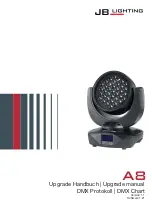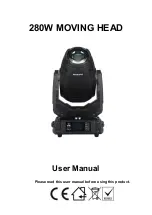
General Hydraulic System Problems
Problem
Possible Cause
Corrective Action
The fitting(s), hose(s), or tube(s) are
loose or damaged.
Secure or replace loose or damaged
hydraulic connections.
Hydraulic fluid is leaking from the
system.
The O-ring(s) or seal(s) are missing or
damaged.
Install a new O-ring(s) or seal(s).
The hydraulic fluid level in the hydraulic
tank is low.
Adjust the hydraulic fluid level.
The hydraulic system has a wrong type
of fluid.
Replace the hydraulic fluid.
Note:
Refer to the traction unit
Operator’s Manual
for hydraulic fluid
specifications.
The incompatible hydraulic fluids are
mixed in the system.
Replace the hydraulic fluid.
There is water in the hydraulic system.
Replace the hydraulic fluid.
The hydraulic fluid foams excessively
causing fluid leakage from the hydraulic
tank breather.
The pump suction line has an air leak.
Replace the pump suction line.
The hydraulic fluid level in the hydraulic
tank is low.
Adjust the hydraulic fluid level.
The suction filter or suction line is
damaged, loose, or clogged.
Secure, clean or replace the suction
filter or suction line.
The hydraulic fluid is contaminated or
the fluid viscosity is too light.
Replace the hydraulic fluid.
Note:
Refer to the traction unit
Operator’s Manual
for hydraulic fluid
specifications.
The hydraulic fluid cooler is damaged
or plugged.
Repair or replace the hydraulic fluid
cooler.
The fluid cooler air flow is obstructed.
Verify cooling fan operation and remove
debris from in and around the fluid
cooler.
The traction pump bypass valve(s) is
open or damaged.
Close or replace the traction pump
bypass valve(s).
The charge pressure is low (steering
and lift circuit performance is also
affected).
Verify charge pressure; refer to the
InfoCenter SERVICE–INPUT/OUTPUT
–TRACTION–TRACTION INPUTS
FRONT TRACTION and REAR
TRACTION readings while the machine
is stationary.
The traction pump is worn or damaged.
Verify traction pump operation; refer to
Traction Pump (P1 and P2) Tests in
the Hydraulic System chapter of this
manual.
The drive axle motor is worn or
damaged.
Repair or replace the drive axle motor.
The hydraulic system operates hot
(exceeds 95° C (203° F).
Note:
If a traction circuit component
has internal wear or damage, it
is possible that the other traction
components are also damaged.
Troubleshooting: General Hydraulic System Problems
Page 3–26
Outcross 9060
18234SL Rev B
Summary of Contents for 07511AA
Page 4: ...Reader Comments Page 4 Outcross 9060 18234SL Rev B ...
Page 18: ...Safety Safety and Instructional Decals Page 1 10 Outcross 9060 18234SL Rev B ...
Page 38: ...Specifications and Maintenance Special Tools Page 2 20 Outcross 9060 18234SL Rev B ...
Page 96: ...Engine Service and Repairs Page 4 24 Outcross 9060 18234SL Rev B ...
Page 208: ...Hydraulic System Service and Repairs Page 5 112 Outcross 9060 18234SL Rev B ...
Page 294: ...Electrical System Service and Repairs Page 6 86 Outcross 9060 18234SL Rev B ...
Page 384: ......















































